June 17, 2016
Air Date: June 17, 2016
FULL SHOW
SEGMENTS
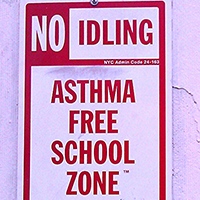
Air Pollution and Mental Illness
View the page for this story
The link between air pollution and respiratory illnesses like asthma is familiar, but new research from Sweden suggests that air pollution could also impact our mental health. Host Steve Curwood speaks with Anna Oudin of Umea University in Sweden about her study and how this changes our thoughts about air pollution. (06:00)
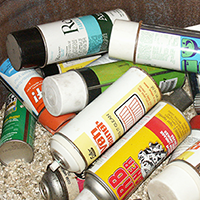
Congress Modernizes Toxics Law
View the page for this story
Congress has passed a long-needed update of the 1976 Toxic Substances Control Act. The new legislation provides uniform federal review standards for thousands of every-day chemicals, and broad new EPA powers to review them for safety. Cheryl Hogue of Chemical and Engineering News discusses this new legislation’s scope and history with host Steve Curwood. (07:15)

Ag Chemical Company Mergers Raise Anti-Trust Concerns
View the page for this story
Pending and proposed mergers involving the world’s biggest agricultural chemical companies, such as Monsanto, Bayer, Dow, DuPont, Syngenta, and ChemChina could further consolidate the industry. Financial analyst Lou Whiteman of The Street tells host Steve Curwood what’s driving these deals and what they could mean for companies, shareholders, and farmers. (06:50)
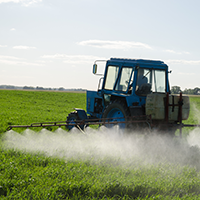
Cancer Concerns Cloud Herbicide's Future
/ Jenni DoeringView the page for this story
The European Union must soon decide whether to relicense the popular herbicide glyphosate, but political opinions may be getting in the way. Living on Earth’s Jenni Doering reports that while the World Health Organization’s cancer research agency identifies glyphosate as a probable carcinogen, a European regulatory agency disagrees. (05:50)
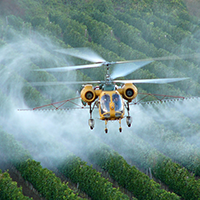
Atrazine, Wildlife and Workers
View the page for this story
An Environmental Protection Agency report indicates that Atrazine, the number 2 weed-killer in the US, persists in the environment at levels far higher than considered safe. Reproductive damage in frogs and amphibians is linked to Atrazine, and environmental justice groups worry about health effects for farm workers; an EPA report on human health effects of the herbicide is still in progress. Lisa Arkin, Executive director of Eugene, Oregon, based group Beyond Toxics, discusses the issues and alternatives for the timber industry in Oregon with host Steve Curwood. (05:50)

Beyond the Headlines
/ Peter DykstraView the page for this story
In this week’s trip beyond the headlines, Peter Dykstra and host Steve Curwood look at Donald Trump’s changing views on climate change, super bacteria at Rio’s beaches where the Olympics will soon open, and remember the only press conference ever held on the White House roof. (04:45)
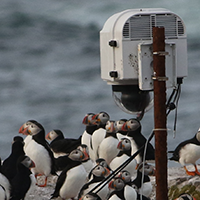
The Puffin TV Show
View the page for this story
Each year as wild birds nest, millions of viewers watch via nest cams. From the Seal Island National Wildlife Refuge in Maine there’s a live video stream of puffins raising chicks in an underground burrow, and hanging out on the rocks Host Steve Curwood discusses the cameras with Steve Kress, director of the Audubon Society’s Project Puffin. (07:30)
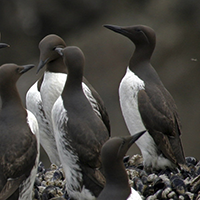
Birdnote®: Common Murres
/ Michael SteinView the page for this story
On the high cliffs of the Pacific Coast, it’s nesting season for many birds, including common murres. BirdNote®’s Michael Stein describes the special adaptation these birds have evolved to keep their eggs safe. (02:00)
Show Credits and Funders
Show Transcript
HOST: Steve Curwood
GUESTS: Anna Oudin, Cheryl Hogue, Lou Whiteman, Peter Dykstra, Lisa Arkin, Steve Kress, Michael Stein
REPORTERS: Jenni Doering, Peter Dykstra and Michael Stein
[THEME]
CURWOOD: From Public Radio International, this is Living on Earth.
[THEME]
CURWOOD: I'm Steve Curwood. Researchers identify a new risk from air pollution – it seems to affect mental health.
OUDIN: Children who lived in polluted areas were more likely to have a dispensed medication for a group of psychiatric illnesses. The risk of dispensing at least one of these medications increased with nine percent - that’s comparable to, for example, cardiovascular disease.
CURWOOD: Also, some researchers argue that exposure to glyphosate, the most heavily applied herbicide, is also associated with damaging health effects.
DONLEY: Glyphosate exposure was correlated with non-Hodgkin’s lymphoma, which is a rare form of cancer. And there was sufficient evidence that glyphosate could induce DNA damage.
CURWOOD: Pollution, weed-killers and more this week, on Living on Earth. Stick around.
CURWOOD: That and more this week, on Living on Earth. Stick around.
[NEWSBREAK MUSIC: Boards Of Canada “Zoetrope” from “In A Beautiful Place Out In The Country” (Warp Records 2000)]
ANNOUNCER: Support for Living on Earth comes from United Technologies, innovating to make the world a better more sustainable place to live.
[THEME]
Air Pollution and Mental Illness
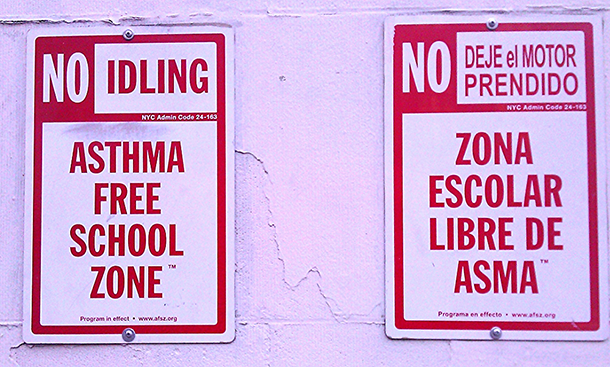
A sign on a school in Manhattan attempts to limit air pollution from idling cars near a school. A new study from Sweden suggests risk of asthma is not the only consequence of air pollution exposure in childhood; there are also apparently mental health risks. (Photo: Mike Licht, Flickr CC BY 2.0)
CURWOOD: From the Jennifer and Ted Stanley studios at the University of Massachusetts Boston and PRI, this is Living on Earth. I’m Steve Curwood. A breakthrough study from Sweden has found air pollution is linked to mental disorders in young people. For years, science has known that pollution from smokestacks and exhaust pipes can promote diseases, including heart disease and asthma. But now by cross-referencing pollution exposure and psychiatric medication records of children and adolescents in Sweden, researchers say bad air appears to be bad for mental health. Joining us to discuss the study is a lead author Anna Oudin. She’s a researcher at Umea University in Sweden.
Thanks for joining us, Anna.
OUDIN: Thank you so much for inviting me.
CURWOOD: So tell me, how did your study work? You sampled, well, a pretty large population of people...I think it's, what, half a million or so.
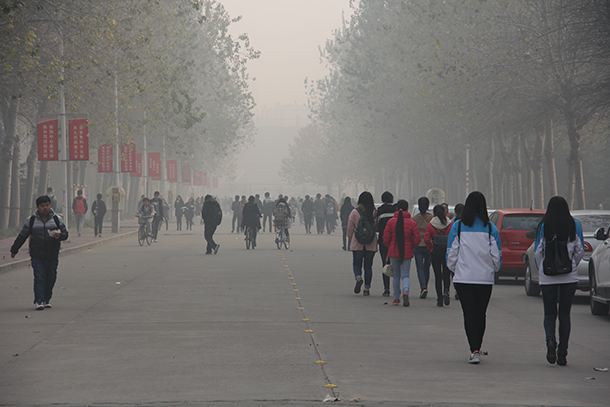
Air pollution in China (Photo: V.T. Polywoda, Flickr CC BY-NC-ND 2.0)
OUDIN: Yes it is. As researchers we're a bit lucky in the Scandinavian countries because we have these nationwide covering registries, for example, the register I used is the registry of dispensed medications, which covers everyone living in Sweden, or at least everyone registered as living in Sweden, and every time anyone dispenses medication it's recorded there. So we used that registry and we combined that with the registry of where people live, and we combined that with the model of air pollution that is a national model in order to look at air pollution and dispensed medications for psychiatric disorders in children and adolescents.
CURWOOD: So, what kind of pollutants are we talking about and how common are these?
OUDIN: Well we looked at NO2 PM 10 and PM 2.5. And NO2 is usually seen, at least in our country, as a marker for vehicle exhaust and PM 10, which represents particles, which can come from many different sources. So, I would that it is basically say from traffic.
CURWOOD: And what did you find here in your study?
OUDIN: We saw that children who live in polluted areas were more likely to have a dispensed medication for a group of psychiatric illnesses. We saw that for an increase of 10 micrograms per cubic meter in NO2, the risk of dispensing one of these medications increased with nine percent if you look at the overall estimate. We looked at this in four different regions, but overall it was nine percent. It's comparable to what we've see for cardiovascular disease risk increase.

Smog in Santiago, Chile (Photo: Sebastian Landgren Lyng, CC BY 2.0)
CURWOOD: So what you're saying is it's not causal but there is definitely some sort of correlation, a link between levels of air pollution and the amounts of psychiatric medications that are being dispensed in those populations.
OUDIN: Yes, in our population, we saw that clear link. We can never know for sure that it's causal but there was definitely an association.
CURWOOD: And this association goes down to actually very low pollution levels as I understand.
OUDIN: Yes, we looked at both in rural areas and urban areas, and we saw the same association basically everywhere, independent of how we looked or what we adjusted for. We've done our best to rule out any other factor but we can never be entirely sure, of course.
CURWOOD: So, specifically what are the kinds of mental health disorders were you looking at in relation to the solution?
OUDIN: Yeah it was medications in a broad group of medications for psychiatric disorders, and it ranges from very mild symptoms, for example, sleeping disorders or sedative medicines to antipsychotic medications, so it's very broad and we can't separate these from each other based on the data we have. So we can't say if it's a certain medication that drives the association or if it's all the medications so that's what we want to do next, of course, to apply more detailed data from the medications.
CURWOOD: So, you could perhaps show links between the air pollution exposure in depression or anxiety or autism or psychosis that sort of thing on a very specific basis but not yet.

Cities in Sweden have relatively low levels of pollution compared to other parts of the world, but pollution there is still correlated with childhood mental health disorders (Photo: Andrea Paraggio, Flickr CC BY-NC-ND 2.0)
OUDIN: Yes, exactly.
CURWOOD: Your research is really intriguing because typically looking at psychiatric disorders of people, they think about genetics, they think about what might be going on socially, in family is there trauma, and now your research would indicate that we should also look to environmental factors.
OUDIN: Yes, I think that when you see these results in other studies that it could definitely probably influence how we look at mental illness, that the environmental could play an important role. Maybe the awareness of the environmental factors could help reduce stigma, for example. I'm not sure, but hopefully.
CURWOOD: How do you think your work changes the way we might be thinking about regulating air pollution?
OUDIN: I think that, I mean, when regulators and policy makers think about this, they usually take into account the health risks of air pollution and weigh it against the costs of reducing air pollution but these kinds of health issues are not included in those cost calculations. We know that air pollution can get into the brain and cause inflammation and that psychiatric disorders can be caused by inflammation, so I think there is a need for large epidemiological studies, and I think there will be more to come in the next few years.
CURWOOD: Anna Oudin is a researcher at Umea University in Sweden. Thank you for taking the time with us today, Anna.
OUDIN: Thank you so much.
Related links:
- Read the paper here
- Previous research linking air pollution to mental health disorders
[MUSIC: Amabutho, “Theletsha Meropa-Listen to the Drums of Africa,” Sikelela, Tshidiso Phillip Mpobole, ALMA Records]
Congress Modernizes Toxics Law
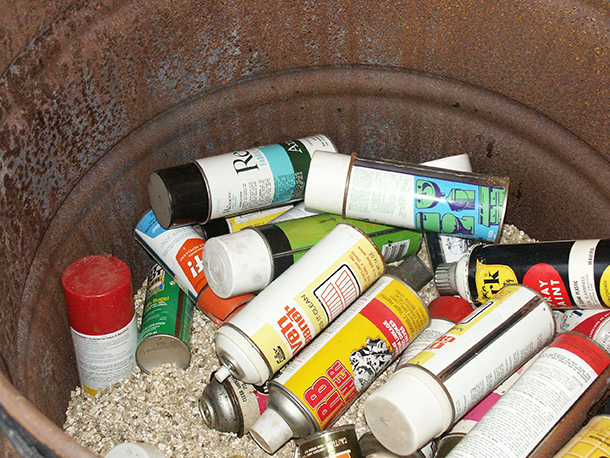
The Frank L. Lautenberg Chemical Safety for the 21st Century Act gives the EPA broad new authority on testing and risk evaluation of chemicals (Photo: PA Resources Council, CC BY-NC-ND 2.0)
CURWOOD: It’s been four decades since Congress approved the original Toxic Substances Control Act. Now, in a rare display of bipartisanship, both houses of Congress have passed the Frank R. Lautenberg Chemical Safety for the 21st Century Act, a long awaited overhaul of what is often referred to as TSCA. President Obama is expected to sign the measure into law, and when he does the Environmental Protection Agency will gain more powerful and broader authority to review and regulate new and existing chemicals for safety. Cheryl Hogue, assistant managing editor of Chemical and Engineering News joins us now to help us understand the details. Welcome to the program, Cheryl.
HOGUE: Hi, Steve. It's good to be here.
CURWOOD: So, as I understand it, the chemical industry was pretty comfortable with this law. There wasn't much interest in changing it. What motivated them to get involved with the rewrite here?
HOGUE: I think there're several things that happened. Chemical companies began to realize that consumers are losing trust in the products that they make. They want consumers to feel good about the products, the chemicals that are in our products that we use every day whether it's laundry detergents or toys or just solvents that we might use to get grease off of things. So they're concerned that chemicals in the United States are not reviewed for their safety. A lot of people don't know that no government agency has checked on chemicals for the most part and so they want a stamp of approval from the federal government to tell consumers, hey, this is safe to use as intended like pesticides are, that these have been looked at and determined that they are OK to use. Second is the Obama Administration really kick-started this back in 2009. Lisa Jackson, who was President Obama's first EPA administrator, came out with a plan for changing this law and started working with industry and saying what do you want out of this and how can we get some more information so that we can determine whether chemicals really are safe?
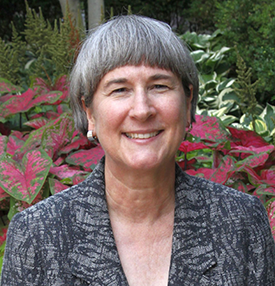
Cheryl Hogue is assistant managing editor of Chemical and Engineering News (photo by Andrea Widener).
CURWOOD: So how does this legislation differ from the original Toxic Substances Control Act?
HOGUE: Steve, there're a few points that are really big. One is the EPA can actually get information about chemicals so they can assess this. This has been very difficult for the agency to do simply because the old law made it very cumbersome for EPA to get that information. The second big change that this law makes is it actually gives EPA very clear authority that if a chemical poses a risk to human health and the environment, EPA can actually regulate it. It can ban it, it can restrict it, it can require labeling. That's something that was in the old law but in practical terms EPA couldn't use that authority.
CURWOOD: So, now the new law says that the EPA most look at all chemicals, but I'm doing the math here, Cheryl.
[LAUGHS]
CURWOOD: There's like 50, 60, 70,000 chemicals now in use. I mean, how long does it take to do this?
HOGUE: That's a really good question I've heard estimates of up to 35 years. The question of how many chemicals are actually on the market today is also a really good question and EPA is required to determine that. I've heard of estimates as low as 8,000. So, hopefully with this new authority EPA will be able to ask chemical companies, hey, are you still selling this stuff and they'll get that information and we'll have a better number.
CURWOOD: There are thousands of chemicals out there but, in particular, what group of chemicals are of great interest that will now come under the scrutiny of the EPA that was more or less exempt before.
HOGUE: Well, asbestos comes to mind. Now, here's a known carcinogen. EPA tried to ban this in 1989, but the regulation was challenged in court and the court overturned this regulation. That's because the old law said that EPA had to pick the least burdensome option for regulating. A company can always come up with some other option that EPA hasn't chosen that it can argue is less burdensome. So EPA's ban on asbestos, a known carcinogen, got overturned in 1991. And I think that that chemical is ripe for EPA action. I also think that there are a group of solvents the EPA has been working on under the Obama administration that may pose risks to people and EPA was going to try to regulate them under the old law and I think they will try to regulate them under the new law and be much more successful.
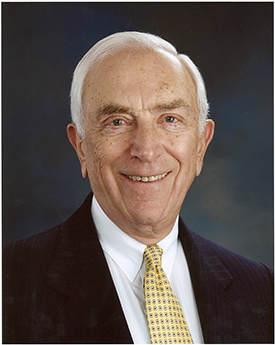
The new TSCA bill was named in honor of the late Sen. Frank Lautenberg, one of the bill’s original sponsors. (Photo: Official U.S. government photo, Wikimedia Commons public domain)
CURWOOD: So, who are the winners in this new legislation?
HOGUE: I think there are group of winners. I hope the American public is the number one winner. I hope that this means that the federal government will have a better chance at looking at chemicals and determining which are OK for us to use so we have a little bit better idea about that. The fact that EPA will actually be able to take some of these chemicals off the market if they pose a risk to human health or the environment is huge and I also think the winners are chemical companies because they're getting a lot of what they wanted in this law. This is Republican Congress and they certainly have listened to industry, but I think the chemical industry really wants people to feel better about the chemicals that they're buying in products.
CURWOOD: So, some consumer groups say that this legislation really doesn't go far enough.
HOGUE: Yes, they're very concerned that this law will handcuff states once EPA starts looking at a chemical. They can't take any action. They think that states need to be the great backstop to when EPA doesn't take action just like they have for the last maybe 10 years.
CURWOOD: So we have a divided government, a Democratic president, and Congress, which through time has been fairly well divided. How did the bipartisan deal get struck for this?
HOGUE: Well, the man for whom the bill is named, Frank Lautenberg, was a senator from New Jersey, a Democrat. He was a big champion of chemical safety. He had a lot in common with a senator from another state that is a big chemical producer. Of course New Jersey is where Frank Lautenberg is from, and that was David Vitter from Louisiana.
CURWOOD: Yeah, Vitter is a Republican, of course.
HOGUE: That's correct, and they worked together and they hammered out a bill three years ago, and they released that bill in May of 2013. Now, two or three weeks after that bill was introduced, Frank Lautenberg died and then the question became is can we keep this momentum going, this political momentum on this, and stepping into the breach was Senator Tom Udall from New Mexico and he and David Vitter worked on this bill and they worked it out. It's pretty amazing that in an election year they worked out what can be called an environmental law.
CURWOOD: Cheryl Hogue, assistant managing editor of Chemical and Engineering News. Cheryl, thanks so much for taking the time today.
HOGUE: Thanks, Steve.
Related links:
- EPA: About the 1976 Toxic Substances Control Act
- Chemical and Engineering News: “Senate sends chemical safety legislation to Obama”
- Chemical Management: “Congress passes historic legislation to modernize TSCA”
[MUSIC: Charlie Haden/Hank Jones, “Nobody Knows the Trouble I’ve Seen,” Steal Away, traditional African-American spiritual, Verve Records]
CURWOOD: Just ahead...two of the world’s most widely used pesticides are coming under fire from regulators. Stay tuned to Living on Earth.
ANNOUNCER: Support for Living on Earth comes from the Gordon and Betty Moore Foundation, and from a friend of Sailors for the Sea, working with boaters to restore ocean health.
[CUTAWAY MUSIC: Juan de Marcos and the Afro-Cuban All Stars, “13.3.2.21.1.1.8.5,” Live in the Hague/Live in Holland, Juan de Marcos/Dave Alraro, DM Ahora! Records]
Ag Chemical Company Mergers Raise Anti-Trust Concerns

Bayer has offered to buy Monsanto for $62 billion. Monsanto, maker of Roundup® and it’s key ingredient glyphosate, has declined the offer so far, but is open to further discussion. (Photo: Conan, Flickr CC BY 2.0)
CURWOOD: It’s Living on Earth, and I’m Steve Curwood. Big agricultural chemical makers are getting bigger, with a new wave of mergers unfolding that could take the number of major companies that control most of the market, from six to just four. This is already a fairly consolidated industry, so to find out what’s going on, we called up Lou Whiteman, a Senior Analyst at The Street, a financial media company. Lou, welcome to Living on Earth.
WHITEMAN: Thank you.
CURWOOD: First, go down the list for me the mergers that are on tap and the ones that have already taken place.
WHITEMAN: Sure, we have ChemChina is buying Syngenta for $43 billion. We have Dow and DuPont getting together in a $130 billion deal after which they're going to split off their combined agricultural assets into a separate company. And most recently we have Bayer offering $62 billion for Monsanto.
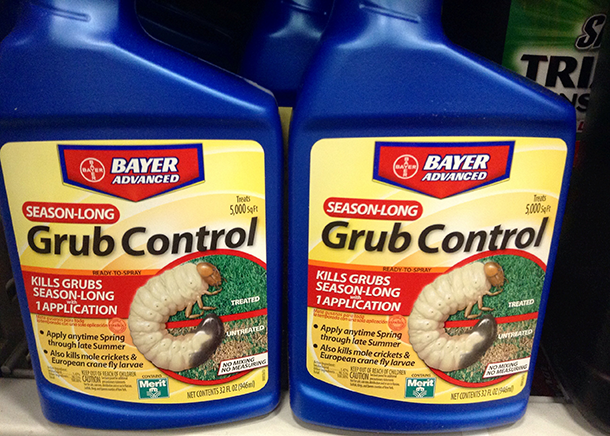
Bayer already has a strong presence in the pesticides market (Photo: Mike Mozart, Flickr CC BY 2.0)
CURWOOD: Yeah, so why are these major mergers and acquisitions happening at this point?
WHITEMAN: Well, there's a confluence of different trends that are causing this. For one, a lot of these companies for years found growth by going into emerging markets and slowly but surely that is sort of played out so the next step for growth in a maturing industry is to consolidate among yourselves. You also, you've had a combination of weak prices for corn and soybeans and wheat that have hurt companies like Monsanto. In Monsanto's case, a US company, the strong dollar makes its products more expensive overseas. Monsanto missed second quarter earnings. Revenue was down I think 12 percent year over year, and they warned that extreme headwinds would eat into results for the rest of 2016. So you have companies that are both starved for growth to begin with and then a market that isn't growing right now, so they're looking at other options.
CURWOOD: Lou, why is the agricultural industry hurting so much right now? There are more and more people on the planet, we keep eating every day. What's the problem?
WHITEMAN: Yes, you're right and in a lot of parts of the world there is global recession or there is at least cutting back in different markets and it's just we've had weird growing seasons. This is El Niño. We're just at a moment where agriculture is not growing but in a longer-term trend certainly this is a growth market.

Dow Chemical’s plant in Taft, Louisiana, seen from across the Mississippi River (Photo: Roy Luck, Flickr CC BY 2.0)
CURWOOD: Now, recently there was a group of non-governmental organizations here in the United States that sent a letter to the US Department of Justice urging that the Attorney General challenge this proposed merger of Dow Chemical and Dupont on antitrust grounds. How valid are those concerns?
WHITEMAN: It's a big concern. I think this current Department of Justice, I don't think any deal is a slam dunk and certainly two of the best-known names in chemistry, Dow and Dupont, that's $130 billion company they're going to create. It is definitely going to get a look. I don't think agriculture is going to drive the anti-trust discussion on that, but, yes there's a lot of risk if this deal doesn't get done.
CURWOOD: And what concerns in terms of antitrust or other regulatory concerns are there about the Monsanto, Bayer possible deal?

Lou Whiteman is an analyst with The Deal, a business unit of digital financial media company The Street. (Photo: courtesy of Lou Whiteman)
WHITEMAN: This would be a huge one for the farm industry. You're talking about a sort of a one-stop shop for both seeds and pesticides for the whole world. This would be a company that would have global exposure control upwards of 25 percent, maybe 30 percent, of the world's pesticide market - a similar maybe slightly smaller amount of the seed market. This is a massive undertaking and if this deal comes before the Department of Justice, given the importance of farm states given the number of legislators in this country that are representing farm states, you're going to hear a major stink about it and it's one of the reasons quite frankly it's hard to imagine that deal getting through.
CURWOOD: What about the German side? What do their shareholders think about this deal?
WHITEMAN: They've been skeptical as well. Bayer is a pretty well diversified company. This would make the company close to 50 percent agriculture. Their shares have suffered. The management is confident this is the right long-term bet, but Beyer offered a proximally $62 billion for Monsanto, and Monsanto today I think is trading a market cap of a little less than $50 billion which is a huge spread. What that tells you is the market has its doubts. The bigger the spread is the more doubts there are about whether or not this deal will ever close, and it should be noted too that Beyer already has. Monsanto is the best-known name in GMO's, but Bayer has a large seed business including a GMO business. In fact, their crop science has grown in recent years better than Monsanto so they have a lot of patents there too. This isn't just a Monsanto game on GMO seeds.

ChemChina is in the process of buying Swiss chemicals giant and atrazine maker Syngenta AG (Photo: agriflanders, CC BY 2.0)
CURWOOD: The European Union is currently debating whether or not re-license Glyphosate, which is used in Monsantos' Roundup. And then the Environmental Protection Agency here in United States recently released report on Atrazine's harmful effects on wildlife. How might of the threat of tighter regulation of the key products influence the way that these companies are seeking to consolidate?
WHITEMAN: Obviously Roundup is a very important business for Monsanto, and if they can't sell it in big parts of the world, that is going to make a difference. I think there's enough there that they and potential buyers need to be looking at it and need to be concerned with it but I don't think at the end of the day that those threats change the calculus.
CURWOOD: So, at the end of the day what kind of impact might these mergers and acquisitions have on farmers?
WHITEMAN: There is an argument to be made for vertical integration. There's an argument to be made that having say the one stop shop where you can get your seed products, your pesticides, everything from one vendor you take out inefficiency say in the distribution system, you have more resources for better research and development, you have better pricing power, but you also have more room, say, to price competitively or lower prices as need be. It's a dangerous argument. It's an argument you see any time there's an antitrust concern but you know it isn't without merit. There will be better margins, better ability to develop new products for the farmers. Farmers would probably argue back really quick but yeah you know if it's a monopoly that that might not serve me well, and it's a fair point. But this is how anti-trust decisions are made. This is the debate that goes back and forth.
CURWOOD: Lou Whiteman is a senior analyst with The Street, a digital financial media company. Lou, thanks so much for taking the time with us today.
WHITEMAN: Thanks for talking.
Related links:
- Reuters: “Justice Department should analyze Dow-DuPont deal: senator”
- Letter to U.S. Department of Justice expressing anti-trust concerns over Dow-DuPont merger
- Bloomberg: “Monsanto Due Diligence Looms as Next Step in Bayer Deal Push”
- Fortune: “Here’s How a Bayer-Monsanto Merger Affects Workers, Farmers, and Investors”
Cancer Concerns Cloud Herbicide's Future
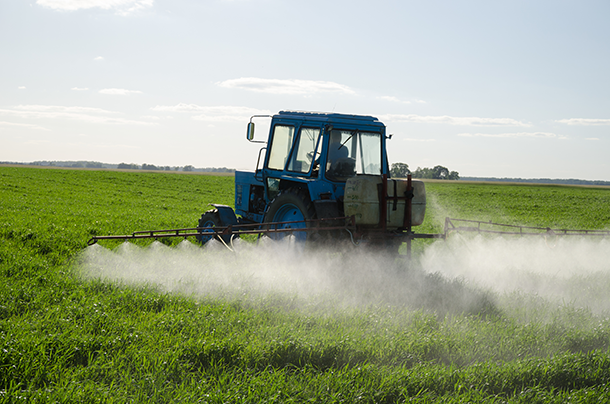
A tractor sprays farm chemicals on a field (Photo: Aqua Mechanical, Flickr CC BY 2.0)
CURWOOD: A merger between Monsanto and Bayer is still up in the air, and so is the future of a key Monsanto product: its blockbuster weed-killer Roundup. Monsanto has built its business selling genetically modified seeds for corn and soybeans linked to the herbicide, with more than two and a half billion pounds of glyphosate, the core ingredient of Roundup, applied over the last two decades to US farmland. But ever since the World Health Organization declared glyphosate a probable carcinogen in 2015, European regulatory agencies have been rethinking its future. And in May, 48 Members of the European Parliament even took a test to see if glyphosate was detectable in their urine. Well, for all 48, it was. Living on Earth’s Jenni Doering has our story.
DOERING: The most commonly-used pesticide in the world faces an existential threat. If a key European Union panel doesn’t renew glyphosate’s license before it expires June 30th, the clock will start ticking on a six-month phase-out of some products sold in Europe. Citizens there are concerned with glyphosate’s possible health effects, which include cancer now that the World Health Organization lists it as a probable carcinogen. The protests in the streets there have an intensity that surprises Nathan Donley of the Center for Biological Diversity.
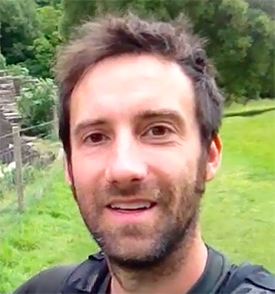
Nathan Donley is a scientist with the Center for Biological Diversity. (Photo: Nathan Donley)
DONLEY: European regulators thought that this was going to be a walk in the park to reapprove glyphosate. But the public is starting to speak with one voice on this — the anger and the uproar that’s happening in Europe right now — you know, that decision will potentially affect people’s health.
DOERING: Advocacy groups in the U.S. as well are closely watching the European battle over glyphosate, and Donley says the U.S Environmental Protection Agency is also taking note.
DONLEY: So I think EPA, right now, is waiting to see, quite frankly, how this all plays out in Europe, because the last thing they want is people protesting in the streets over here.
DOERING: But Tom Driscoll, the Director of Conservation Policy and Education for the U.S.-based National Farmers Union, says that a possible ban in Europe won’t necessarily affect policy in the United States.

A May 2014 march to protest against Monsanto’s pesticides and genetically modified organisms. (Photo: Visitor7, Wikimedia Commons CC BY-SA 3.0)
DRISCOLL: We have very different approaches and what they do over there will not have a consequential bearing on our ability to use glyphosate in the U.S. However, it would possibly affect prices on inputs because of the loss of the European market; it might cause glyphosate to become more expensive in the U.S.
DOERING: Glyphosate is valuable for commodity farmers because twenty years ago, scientists at Monsanto figured out how to genetically immunize corn and soybeans against the herbicide. With Roundup-Ready seeds, farmers could spray fields and kill weeds without damaging their crops. But much is still unknown about glyphosate’s possible health impacts, says Nathan Donley.
DONLEY: Last year, the IARC, which is the cancer research arm of the World Health Organization, found that glyphosate is a probable human carcinogen. They looked at epidemiological data; in at least one of the studies, glyphosate exposure was correlated with non-Hodgkin’s lymphoma, which is a rare form of cancer. And they also looked at other lines of evidence — so, DNA damage is one pathway that can lead to cancer, and they came to the conclusion that there was sufficient evidence that glyphosate could induce DNA damage.

A single Roundup-Ready corn plant appears to be thriving in a demonstration field that has been heavily sprayed with the glyphosate-based Roundup herbicide (Photo: Matthew Traucht, Flickr CC BY-NC-ND 2.0)
DOERING: But in November 2015 the European Food Safety Authority, or EFSA, found that glyphosate was “unlikely” to cause cancer in humans. And in the U.S., the EPA is taking heat for a report that also said glyphosate was unlikely to cause cancer. That report was posted online in late April, but disappeared three days later. EPA says that although the report was labeled “final” on every page, it was prematurely released. Donley blames politics for these conflicting decisions.
DONLEY: The European Union and the EPA, unfortunately, have political considerations that they have to contend with. And ultimately, this is weakening regulatory oversight.
DOERING: Monsanto says that politics aren’t in play, and that the assessment “has been one of the most thorough evaluations of an agricultural product ever conducted.” But Tom Driscoll of the National Farmers Union thinks that regulatory agencies like EPA aren’t evaluating pesticides for safety as effectively as they could.
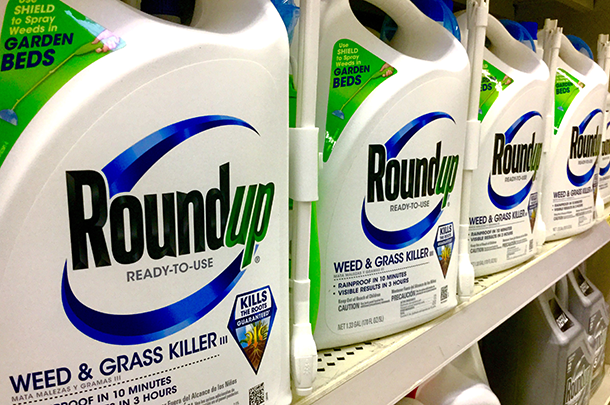
Monsanto’s Roundup herbicide contains added ingredients called surfactants that help glyphosate enter plant tissues (Photo: Mike Mozart, Flickr CC BY 2.0)
DRISCOLL: EPA needs more resources in order to be able to process more of these applications. As it stands the registration process is rather tedious and expensive, so the crop protecting companies are under tremendous pressure to maximize profits on the products that do make it through registration, and that kind of crowds other options out of the market.
DOERING: To complicate matters, the studies all focus on glyphosate alone. But herbicides like Roundup include additional ingredients to help the glyphosate get into plant tissues. Even less is known about what effects these extra ingredients, and other pesticides on the market, might have on human and environmental health. Nathan Donley again:
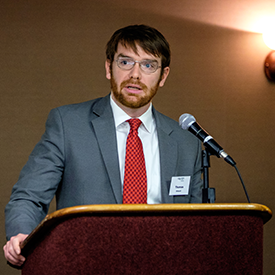
Tom Driscoll is the Director of Conservation Policy and Education at the National Farmers Union, based in Washington, D.C. (Photo: courtesy of National Farmers Union)
DONLEY: I think all of this focus on glyphosate is really important, and it’s helping push the ball forward, but glyphosate is not the exception, it’s the rule. There are many, many pesticides that are known carcinogens, and most pesticides are associated with some sort of adverse health effects.
DOERING: Health effects not limited to cancer. Some researchers also suspect glyphosate is an endocrine disruptor that can hijack the body’s hormonal system. The European Union has just days to decide whether or not to relicense glyphosate, but it could take years to determine the safety of this and other pesticides in common use. For Living on Earth, I’m Jenni Doering.
Related links:
- WHO--International Agency for Research on Cancer report on glyphosate
- European Food Safety Authority report on glyphosate
- Prematurely-released “Final” EPA report on glyphosate
- Monsanto’s response to WHO-IARC finding that glyphosate is a probable carcinogen
- Map of glyphosate use in the U.S.
- Reuters: “EU countries refuse to back new license for glyphosate weed-killer”
- The Guardian: “UN/WHO panel in conflict of interest row over glyphosate cancer risk”
- “Concerns over use of glyphosate-based herbicides and risks associated with exposures: a consensus statement”
MUSIC: Marion Meadows, “Morocco,” Jazz Pizzazz, Novus/Bluebird Records
Atrazine, Wildlife and Workers
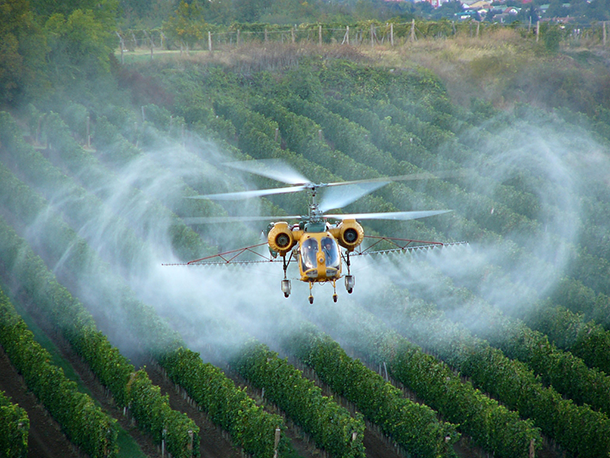
A crop-dusting helicopter sprays a vineyard with pesticides (Photo: Péter Czégény, Wikimedia Commons CC BY-SA 4.0)
CURWOOD: While European regulators wrestle with glyphosate, here in the US regulators are assessing Atrazine, which is made by Syngenta. Atrazine is already banned in Europe, though it is the #2 weed-killer in the US and the EPA recently found the accumulation of atrazine in birds, fish and mammals at concerning levels of toxicity. The EPA has yet to release its human health assessments, and there is now a comment period before its final report on the wildlife impacts of Atrazine. One of its more controversial uses involves plantation forestry, where it is sprayed in combination with 24D, another potent herbicide, to promote the monoculture of evergreens on timberland that has been clear-cut. Much of this spraying has happened in Oregon, where Lisa Arkin of the group Beyond Toxics is based and she joins us now. Welcome to Living on Earth.
ARKIN: Thanks for having me on the show.
CURWOOD: How is Atrazine used out in the environment?
ARKIN: Well, here in Oregon, Atrazine is used by loading up a helicopter with a chemical soup and then spraying that from a machine with a rotating blade so you're very much dispersing this out into the environment and blanketing your ecosystem with it. Of course in farming it would be sprayed by crop dusters or by tractors with booms on them.
CURWOOD: What effects from Atrazine been documented in the ecosystems already?
ARKIN: Atrazine has been shown to be very bio persistent in the environment, so because it maintains its toxicity it's posing a chronic risk to fish, to amphibians and other vertebrates including mammals and as its concentrations get built up in the environment, it's considered to adversely impact the reproductive function of these living organisms, and that is a major concern because if reproduction is disrupted then you aren't going to have the continuation of a species. Atrazine is an endocrine disruptor that can actually chemically castrate amphibians and reptiles. We're not even sure just how much it could impact the reproductive system of a mammal, but it causes frogs and reptiles to be unable to procreate.
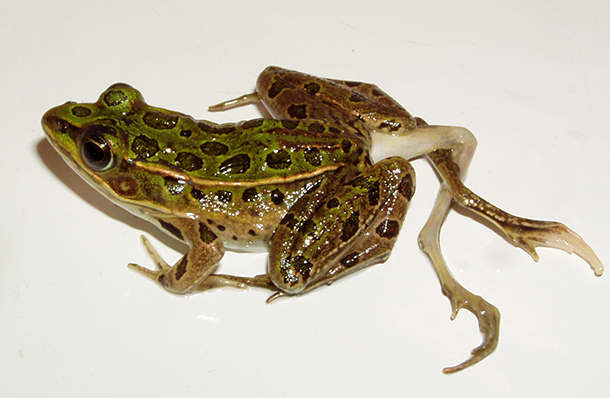
A deformed leopard frog with extra legs as a result of infection by a trematode parasite. Research suggests that atrazine may make amphibians like this leopard frog more susceptible to trematodes. (Photo: Pieter Johnson / Oregon State University, Flickr CC BY-SA 2.0)
CURWOOD: How do humans get exposed Atrazine? Of course, obviously spraying from a helicopter overhead that's kind of obvious, but otherwise?
ARKIN: Atrazine is showing up in our drinking water. You might be aware that there was a multimillion dollar lawsuit that was recently settled with Syngenta the maker Atrazine because Atrazine was found in the finished drinking water of over 100 cities in the United States. So we can be exposed by drinking water that we believe is safe to consume and of course that water is being consumed by a pregnant woman or a toddler or even an adolescent who's reproductive system is in the process of changing that could cause significant adverse impact for that individual. Atrazine has been associated with some reproductive anomalies such as hypospadias where the penis is malformed and another birth defect where the intestines are on the outside of the body instead of within the abdominal cavity.
CURWOOD: So if the forest industry wanted to stop using Atrazine for their Douglas Fir forests, what would be in your view the more ecologically responsible way to do this?
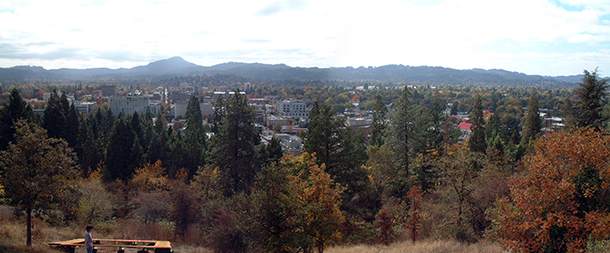
A panoramic shot of Eugene shows the area’s natural beauty and abundance of forested land, which could be impacted by atrazine in the environment (Photo: Ljmajer, Wikimedia Commons public domain)
ARKIN: If we had selective harvesting, if we had biodiverse forests rather than a mono crop, if we made sure that we were protecting drinking water, aquatic habitats for fish and wildlife habitat. If those were our priorities in addition to supporting a healthy forest economy, we could accomplish all of that without the use of Atrazine.
CURWOOD: So, let's say the EPA decides, you know what, Atrazine really isn't particularly safe in the way that it's being used right now. It's got to be banned or severely restricted. What would be the long effects of that?
ARKIN: First of all, there are other alternatives that are less harmful if you've got to use a chemical and second of all there are nonchemical alternatives, and I believe that's where we really have to focus. In Oregon, the chunk of economic benefit from organic farming is growing rapidly each and every year. If you're talking about the economy and the effects of taking Atrazine off the market for the agricultural economy I think we won't see any effect at all.
CURWOOD: Um, you're an environmental justice organization. Why is Atrazine a matter of environmental justice in your view?
ARKIN: Atrazine and other pesticides definitely are an environment of justice issue because the people who bear the greatest burden to their exposures are usually communities that are low income or people of color and the workers who are assigned the jobs of spraying these chemicals. We find here in Oregon that often it is minority workers, so we're talking Latino or Asian workers that are told to spray these chemicals and are not even required to have a license. Also, the communities that live the closest agricultural fields or the forests that are used for industrial purposes to produce Douglas Fir and where Atrazine is sprayed by helicopter are often not only lower income communities and working-class communities, they are people who have less access to political decision-makers. They're the ones who are most impacted but they are the ones whose voices are least heard.
CURWOOD: Lisa Arkin is Executive Director of Beyond Toxics based in Eugene, Oregon. Lisa, thanks so much for taking time to talk to us today.
ARKIN: Thank you.
Related links:
- EPA: Atrazine – Background and Updates
- AGWEB: EPA's Atrazine Report Could Lead to 'De Facto Ban'
- Syngenta statement: EPA preliminary ecological risk assessment on atrazine
- Op-ed, The Register-Guard: Stop aerial herbicide spraying in Lane County
- Beyond Toxics
MUSIC: Juan de Marcos and the Afro-Cuban All Stars, “Viruta,” Live in the Hague/Live in Holland, Juan de Marcos/Dave Alraro, DM Ahora! Records
CURWOOD: Coming up...the delights of bird watching from the comfort of one’s own computer. Nest cams are just ahead on Living on Earth. Stay tuned.
ANNOUNCER: Funding for Living on Earth comes from you our listeners, and United Technologies - combining passion for science with engineering to create solutions designed for sustainability in the aerospace, food refrigeration and building industries. UTC companies such as Otis, Carrier, Pratt & Whitney and UTC Aerospace Systems are helping to move the world forward.
This is PRI, Public Radio International.
[CUTAWAY MUSIC: Nashville Mandolin Ensemble, “Fragenti,” Plectrasonics, Massimo Gatti, CMH Records]
Beyond the Headlines

Republican Presidential contender Donald Trump, seen here speaking at the Conservative Political Action Conference in 2013 in National Harbor, Maryland, has flip-flopped on the issue of climate change. (Photo: Gage Skidmore, Flickr CC BY-SA 2.0)
CURWOOD: It's Living on Earth, I'm Steve Curwood. Let’s see what’s up beyond the headlines now. Peter Dykstra of Environmental Health News, that’s EHN.org and DailyClimate.org has been examining that world, and he joins us from Conyers, Georgia. Hey, it must be getting nice and toasty down there now, Peter.
DYKSTRA: It’s pretty warm here, Steve. But you know what, I a little fun this week looking at the many, many, many twists and turns in the environmental portfolio of one Donald Trump, perhaps you’ve heard of him.
CURWOOD: I have, but you know, Peter, this is only an hour-long show! I don’t know if we have enough time.
DYKSTRA: Gotcha, well let me just give you a few highlights then. You know how Mr. Trump has said that climate change is a hoax, or pseudoscience, or a scam?
CURWOOD: Oh yeah. Well reporters Ben Adler and Rebecca Leber took a look at a 2009 full page New York Times ad calling for strong action on climate change during the upcoming Copenhagen climate summit and you’ll never guess who’s among the business leaders that signed it.
CURWOOD: Not the Donald?
DYKSTRA: Oh yeah, not just the Donald, pretty much The Donald’s whole family. His daughter Ivanka Trump and sons Eric and of course, The Donald Junior.
CURWOOD: And who are the other business leaders?
DYKSTRA: The business leaders are the most un-Trump-like collection of entrepreneurs and big thinkers you could ever imagine. Like Ben and Jerry, philanthropist Jeffery Skoll, Martha Stewart, Deepak Chopra, and the founders of Patagonia, Chipotle, Seventh Generation, Aveda, and the creators of Barney the Dinosaur and the Blue Man Group, all in there with Mr. Trump.
CURWOOD: So I guess Mr. Trump was for climate action before he was against it.
DYKSTRA: Yeah but only for a couple of months. Two months later, during the Northeast’s historically snowy winter of 2010, he called on the Nobel Prize Committee to strip Al Gore of his Nobel because it was snowing where Trump lived.
CURWOOD: Ok, hey what else have you brought us?
DYKSTRA: I’ve brought Super Bacteria, Steve The news agency Reuters says it’s reviewed two unpublished studies that found bacterial enzymes that produce antibiotic resistance—some have called them the “Nightmare Bacteria— in the waters where Rio de Janeiro plans to stage Olympic swimming, rowing, canoeing and sailing events in August.

New studies have found enzymes that produce antibiotic resistance in the waters where Rio de Janeiro is planning to host some Olympic events. (Photo: Christian Lundh, Flickr CC BY-NC 2.0)
Not exactly welcome news for a beleaguered nation dealing with the Zika virus, a failing economy, and a political scandal that has President Dilma Rousseff is in a sort of Head of State timeout, awaiting her impeachment trial.
CURWOOD: Bad times indeed for Brazil, but tell me more about the super-bacteria.
DYKSTRA: The studies were done in 2013 and 2014, but public health experts say there haven’t been any significant improvements in Rio’s water pollution problems since then, so conditions are probably about the same. Those enzymes help build resistance to standard antibiotics.
Super Bacteria are usually only found in hospital situations, not at places like Copacabana and Ipanema and the Olympic sailing venue at Guanabara Bay. The range of risk from Super Bacteria include infections in the lungs, bloodstream, gastrointestinal tract and urinary systems as well as meningitis, and possibly some illnesses that are fatal.
CURWOOD: And some scientists have already recommended that the Olympics be moved or postponed due to the Zika threat alone.
DYKSTRA: Well they have but the World Health Organization says that would be overkill. But the W-H-O also doesn’t require testing for Super Bacteria to make sure recreational waters, like those that are going to be used in the Olympics, are safe. So stay tuned.
HISTORY:
DYKSTRA: On June 20,1979, President Jim¬¬¬¬my Carter had the only press conference ever held on the White House roof.
He dedicated an array of 32 passive solar panels designed to help produce hot water for the White House.
“A generation from now, this solar heater can either be a curiosity, a museum piece, an example of a road not taken, or it can be a small part of one of the greatest and most exciting adventures ever undertaken by the American people.”
CURWOOD: But Peter, as I recall, those solar panels vanished from the White House roof shortly after Jimmy Carter himself left the White House.

For a brief moment in history in 1979, 32 solar panels adorned the White House roof during the last months of Jimmy Carter’s presidency. (Photo: Tom Lohdan, Flickr CC BY 2.0)
DYKSTRA: That’s absolutely right. They were taken down during the Reagan Administration and promptly forgotten until a young sleuth using the Freedom of Information Act found them in 1991. They were tossed into a heap in a government warehouse not unlike the last scene in Raiders of the Lost Ark.
CURWOOD: And what did this young sleuth do?
DYKSTRA: Well I’m not going to brag or anything but the youthful sleuth was me. I was technically still young in 1991 but nobody’s called me that for a while.
And full disclosure, the solar panels were pretty primitive, basically little bathtubs to heat up hot water. They were eventually shipped to Unity College of Maine, using a Federal law that allows nonprofits to claim unused Federal property.
CURWOOD: You can find more on all these stories, at our website, LOE.org.
Related links:
- Grist: “Donald Trump once backed urgent climate action. Wait, what?”
- Rio’s Super Bacteria
- Jimmy Carter’s solar panels
The Beatles, “Here Comes the Sun/ The Inner Light,” LOVE, George Harrison, Capitol Records
The Puffin TV Show
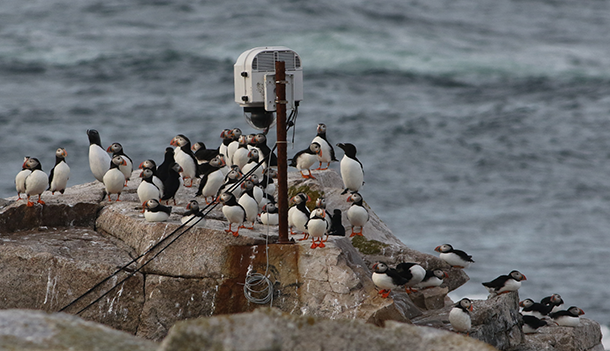
On Seal Island, the daily doings of puffins are streamed live to millions of viewers worldwide. (Photo: Steve Kress)
CURWOOD: The calls of Guillemots and terns and the splash of ocean wave surround two puffins nesting at the Seal Island National Wildlife Refuge in Maine. You can listen too, and watch, thanks to nest cams. These weatherproof cameras, operated by the National Audubon Society, provide an intimate look into the lives and homes of wild birds. As nesting season gets underway, we called up Steve Kress. He’s director of the National Audubon Seabird Restoration Program known as Project Puffin that he told us about last year. Welcome back to Living on Earth, Steve.
KRESS: Hey, it's my pleasure to be back, Steve.
CURWOOD: So let's start by you telling us a bit about Project Puffins bird cams.
KRESS: The cameras are located on remote Seal Island national wildlife refuge, which is about 18 miles off of Rockland, Maine, and it's a remarkable setting for cams. This island is so remote that you can't really see it from the mainland where you have to go on a boat for hours to get to it. The cams show us the world on Seal Island above ground and underground. And this permits us to get new insight into the lives of seabirds.
CURWOOD: So how many of these cams do you have and how long have they been out there?
KRESS: We've had cams on Seal Island now five years. One of them sits on a remote point of land where the Puffins come in, what we call the Puffin loafing ledge. This is a spot where Puffins come to socialize, just to hang out. We also have a camera underground inside of a Puffin burrow. This camera shows the pair of Puffins, billing, preening, incubating their egg, the moments of hatching, the tender feeding of the check and finally the chick leaving the island by itself.
CURWOOD: So how does the presence of the cameras affect these birds?
KRESS: Well, the camera is a small little box that sits in the back of the burrow and the birds just see it as another rock. We have a team of interns, young biologists that are living on Seal Island and they are in charge of protecting the birds and when necessary they can help adjust the camera. Occasionally, the puffins will send a squirt of guano in the wrong direction and it can hit the camera straight on and then of course we hear about it from other viewers right away. So the interns, it's a good thing they're living not too far away to go out, they can pull the camera out and they can clean it off, pop it back in and then everybody's happy again.
CURWOOD: Eww. Yuck.
KRESS: Well, the interns are surrounded by bird guano. This is nothing new to them.
CURWOOD: What do you think the public learns from these wildlife cameras?
KRESS: The public is learning about the lives of birds at a level that they had no way of knowing before. Our friends and explore.org not only have given us the grant to do this work, they've also helped us design a citizen science project with this burrow in which viewers can record the feedings that come into the chick and even identify the kinds of fish. And here's another important part about this, Steve, because they're telling us about the forage fish in the area around the nesting islands, and the forage fish are changing because of climate and they're change because of impacts of fisheries and this pair of puffins is telling us all that.
CURWOOD: So how many people are watching these birds do you think?
KRESS: Last year there where over three million viewer pages open. They were viewed all over the world.
CURWOOD: You know sometimes, nest cams can show some pretty harsh realities. There are those chicks that don't make it. Sometimes there are attacks from predators or even parent birds. What kinds of responses have you had on this from the public?
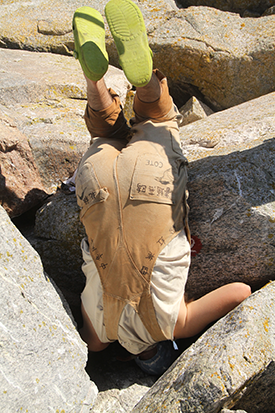
Peeking into a puffin burrow at the Seal Island National Wildlife Refuge in Maine. (Photo: Steve Kress)
KRESS: Well I think that the cameras give new insight that people have never noticed before and that insight is sometimes surprising, sometimes shocking. For example, last year our Osprey camera — there are two Ospreys named Rachel and Steve — much to our shock a bald eagle came and within seconds snatched the chicks right while people were watching. Some people were very upset, but these things happen whether we are seeing it or not. This is predation. Predation happens so quick and without predation these predatory birds wouldn't be able to live.
CURWOOD: So let's go take a look now at one of these nest cams. What's the URL I should use?
KRESS: Explore.org.
CURWOOD: And I can see the puffin burrow live now, so I'm going to click on that.
[CHIRPING IN BACKGROUND]
CURWOOD: I'm hearing chirping and then I'm seeing the puffin, it looks like he or she could be sitting on an egg. Well, there's a couple of them there.
KRESS: The puffins that bred in this burrow faithfully for the past four years at least apparently did not come back this year. Not sure what happened to them. And there's a new pair in there but as far as I know there's not an egg, yet but any day, we're hoping that there will be an egg and this new pair will live to be the new owners of this burrow.
CURWOOD: How do I tell which one is the girl and which one's the boy?
KRESS: The one with the bigger beak might be the boy. Male and female look very similar. The pair that had been in there for the last several years were named Phoebe and Finn. The names of these birds usually come from the viewers, and they named Phoebe first, and they were convinced that baby was the female and Finn was the male, but when we actually captured them, clearly Phoebe was the guy.
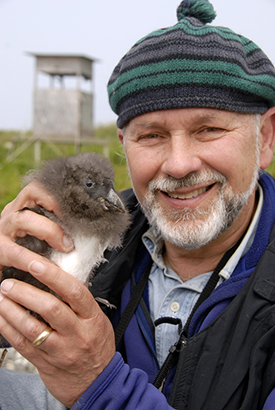
Steve Kress directs the Audubon Society’s Seabird Restoration Program, better known as Project Puffin. (Photo: Derrick Jackson)
CURWOOD: Now the one by the entrance is giving me the side profile. It's probably a guy you know preening his feathers here. [LAUGHS] How do you decide which habitats, nests and species to put on the camera?
KRESS: Species that have a long breeding cycle are actually preferable, lets us have something of interest to watch for a long time and this pair is going to get us an even longer show I think because we've had this long period of getting to know each other and getting comfortable in the burrow and they haven't even laid the egg yet. We've got three months after the egg is late. Six weeks to incubate that egg and other six weeks to raise the chick. That burrow is just going to be so informative to people.
CURWOOD: Steve, please tell me about your favorite bird or pair of birds.
KRESS: I'm particularly fond of Rachel and Steve on Hog Island, the Audubon camp. They're right in the middle of a hubbub of all the comings and goings of the Audubon campers. We see them flying in and out though I tend to be particularly fond of puffins, of course.
CURWOOD: Steve, before you go, the Cornell Laboratory of Ornithology where you teach, and of course, the Audubon Society operate these cameras in wildlife sanctuaries in a variety of places. So what other nest cams should we be tuning into?
KRESS: Explore has a whole range of them. They're all spread out on that one homepage. The Lab of Ornithology has its own set of cameras inside of the nest boxes. The famous one is for Red-tailed Hawks in Ithaca, but they have an Albatross cam in Hawaii and many other cams. So that's another site on the all about birds website.
CURWOOD: Steve Kress is director of the Audubon Society's seabird restoration program otherwise known as Project puffin thanks Dave for taking the time us today.
KRESS: Thank you, Steve.
Related links:
- The Seal Island puffin burrow cam
- More bird cams through the Cornell Lab of Ornithology
- The Audubon Project Puffin
- About Steve Kress
[MUX - BIRDNOTE]
BirdNote®
Common Murres – Nature’s Laugh Track
[Common Murres calling from a cliff ledge]
Birdnote®: Common Murres

Common Murres on a cliff (Photo: Roy Lowe / USFWS)

The Common Murre has a raucous, laughter-like call (Photo: Meghan Riley)
CURWOOD: We're taking flight to the high cliffs of the Pacific Coast now, where it is nesting season for many sea birds, and as Michael Stein explains in todays BirdNote® some birds lay eggs with a special adaptation to keep those eggs safe.
STEIN: Does this raucous laughter sound a little deranged, as it rings out above the crash of ocean waves? The voices belong to birds, to a nesting colony of Common Murres, standing on narrow ledges high on the steep face of a sea-cliff. Precarious as their nest site is, Common Murres nest by the thousands along the Pacific Coast, perhaps millions north along the Bering Sea.
[Calls of Common Murres]
The chocolate-brown murres stand nearly a foot and a half tall, on legs set far back on their bodies. Add to this their sharply pointed bills, and Murres look much like the northern equivalent of penguins of the Southern Hemisphere.
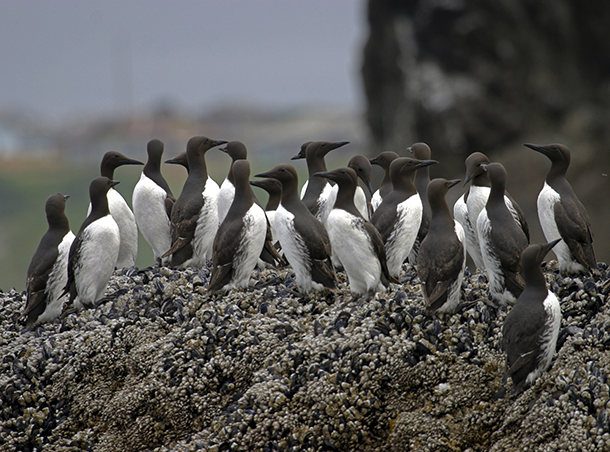
A flock of Common Murres on a seastack off the coast of Oregon (Photo: John Franklin, CC NC-SA 2.0)
Their eggs are specially shaped to survive a narrow cliff ledge. Shaped like a pear, the single, large, blue egg is pointed at one end and blunt at the other, so it spins on the ledge rather than tumbling into the sea below. The Common Murre's guttural call carries well over the roar of the waves, a natural laugh track, far richer than human laughter canned for a sitcom.
[Human sitcom laughter, followed by murres calling]
I’m Michael Stein.
[Common Murres calling]
CURWOOD: For pictures, glide on over to our website—loe.org.
###
Written by Bob Sundstrom
Calls emanating from a nesting colony of Common Murres recorded by Bob Sundstrom.
Producer: John Kessler
Executive Producer: Dominic Black
© 2005-2016 Tune In to Nature.org June 2016 Narrator: Michael Stein
http://birdnote.org/show/common-murres-natures-laugh-track
Related links:
- The BirdNote® story on the Common Murre
- Learn more about the Common Murre on the Cornell Lab of Ornithology’s All About Birds
- Living on Earth’s story about starving Common Murres along the Pacific Coast
- Watch a video of a Common Murre colony
MUSIC: Amabutho, “Old Nr 7,” Sikelela, Charles Langa, ALMA Records
EARTH EAR – COSTA RICA
CURWOOD: We leave you this week in the rain in Costa Rica, in the Rincon de la Vieja National Park in the northwest.
In the treetops, a troop of golden-mantled howling monkeys calls to each other across the cloud forest.
They’re fairly large monkeys, two to three feet long, and mostly black except for a distinctive golden fringe down their sides. Their diet consists of leaves, and they spend most of their time eating and sleeping.
Andrew Roth recorded these noisy primates for the CD Natural Sounds of Costa Rica.
CURWOOD: Living on Earth is produced by the World Media Foundation. Our crew includes Naomi Arenberg, Bobby Bascomb, Jenni Doering, Emmett Fitzgerald, Helen Palmer, Peter Boucher, Adelaide Chen, Jaime Kaiser, Jennifer Marquis and Jolanda Omari. Tom Tiger engineered our show, with help from Jeff Wade, Jake Rego and Noel Flatt. Alison Lirish Dean composed our themes. You can find us anytime at LOE.org - and like us, please, on our Facebook page - it’s PRI’s Living on Earth. And we tweet from @LivingonEarth. I'm Steve Curwood. Thanks for listening.
ANNOUNCER1: Funding for Living on Earth comes you, our listeners, and from the University of Massachusetts, Boston, in association with its School for the Environment, developing the next generation of environmental leaders. And from the Grantham Foundation for the protection of the environment, supporting strategic communications and collaboration in solving the world’s most pressing environmental problems. Support also comes from the Energy Foundation, serving the public interest by helping to build a strong, clean, energy economy, from Gilman Ordway, and from SolarCity, America’s solar power provider. SolarCity is dedicated to revolutionizing the way energy is delivered by giving customers a renewable alternative to fossil fuels. Information at 888-997-1703. That’s 888-997-1703.
ANNOUNCER2: PRI. Public Radio International.
Living on Earth wants to hear from you!
Living on Earth
62 Calef Highway, Suite 212
Lee, NH 03861
Telephone: 617-287-4121
E-mail: comments@loe.org
Newsletter [Click here]
Donate to Living on Earth!
Living on Earth is an independent media program and relies entirely on contributions from listeners and institutions supporting public service. Please donate now to preserve an independent environmental voice.
NewsletterLiving on Earth offers a weekly delivery of the show's rundown to your mailbox. Sign up for our newsletter today!
 Sailors For The Sea: Be the change you want to sea.
Sailors For The Sea: Be the change you want to sea.
 The Grantham Foundation for the Protection of the Environment: Committed to protecting and improving the health of the global environment.
The Grantham Foundation for the Protection of the Environment: Committed to protecting and improving the health of the global environment.
 Contribute to Living on Earth and receive, as our gift to you, an archival print of one of Mark Seth Lender's extraordinary wildlife photographs. Follow the link to see Mark's current collection of photographs.
Contribute to Living on Earth and receive, as our gift to you, an archival print of one of Mark Seth Lender's extraordinary wildlife photographs. Follow the link to see Mark's current collection of photographs.
 Buy a signed copy of Mark Seth Lender's book Smeagull the Seagull & support Living on Earth
Buy a signed copy of Mark Seth Lender's book Smeagull the Seagull & support Living on Earth

